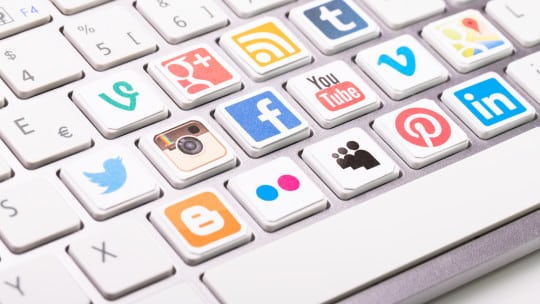

When I began working in digital, paid search on Google, Yahoo and MSN were all the rage, SEO was simple and keyword stacking was still possible. The fastest way to get a new site indexed was to have a few people send the URL to each other with a Gmail account. Social media was new to the marketing tool kit, Friendster was all the rage and a new site called Myspace, originally for musicians, was challenging its dominance.
If you haven’t guessed, I’m old and have been doing this for a long time.
As brand planner and digital strategist in the early 2000s, my role was to act as a Sherpa, taking my clients and peers through this new landscape. In the early days of social media, the easiest way to explain its marketing implications was to position these new channels as a way to level the playing field, where a big brand and an individual had the same ability to reach audiences. In 2005 it was a stretch because everything was too new for everyone, but now, in 2017, it’s reality.
Audiences will consume content and connect with people they like regardless of the source or their affiliation. Examples are everywhere: Kickstarter campaigns raise millions of dollars; simple tweets and Facebook posts go viral and can cost people their jobs; and self-published articles on LinkedIn reach thousands. Publications like Politico and BuzzFeed, which began as small blogs, have grown into established news outlets through the power of social media.
Similarly, individuals built followings by sharing content they liked and now are seen as influential go-to sources, giving birth to a sub-industry known as influencer marketing. (The multitude of problems with influencers is a subject I plan to discuss in a future article.) Sometimes it’s easiest to define in political terms: Social media is an exercise in democracy. The user base chooses winners. By being a user or consumer of a platform, the person is casting a vote.
Social Nedia’s Genesis and Evolution
In the beginning of social media, we marketers assumed that like most other digital channels, Myspace and new platforms such as Facebook, LinkedIn and Twitter would grow into perfect places to buy eyeballs and share brand advertising. While this is how each company’s business model is built, paid advertising is not their optimal use. Over the years, how each channel is used has matured. The result is the ads on social have faded into the background; their role simply is to make the experience possible.
So an overemphasis on paid social media advertising in a marketing mix leaves a lot on the table. The potential value to an organization is much greater than it was when social media was new. The level playing field I mentioned earlier offers companies the opportunity to directly engage with important audiences and the ability to be known for something.
Social media has touched an endless list of industries; traditional media is at the top. Every outlet lists the Twitter handles of its reporters in the lower third of a TV broadcast, or adjacent to the byline on an article. Most larger topics often have a hashtag assigned. We’ve also seen traditional media moving online to Facebook Live and Periscope as a means to reach viewers where they already live.
A Plan for Brands’ Social Media Use
For companies, social media channels are the public face of their organization. The primary use should be to distribute information about their business, culture and cause-related activities, not to advertise products. Research is showing increasingly that social content meant to sell products is irksome to millennials.
So to the dismay of marketers, social channels really aren’t theirs, and from an organizational standpoint the PR/corporate communications teams should be managing them.
Social media, specifically Twitter and LinkedIn, offer companies opportunities to interact publicly. To do so requires an approach that mixes public relations, salesmanship and elements of cocktail-party small talk.
Some detailed tips that demonstrate how public relations professionals should use social media to enhance their work:
1: Prioritize Channels by Their Primary Use: Before posting every piece of content across all of your company’s channels, think about how you, personally, use each platform.
I suspect most of us would say we use Facebook for personal purposes, Instagram to see photos, Twitter to find interesting news/information and follow individuals and LinkedIn to connect with our professional network through conversations and information. These very different uses should inform your use of social platforms for business.
At a corporate level, where the focus is on building and maintaining a brand, I recommend prioritizing Twitter and LinkedIn, where audiences are comfortable consuming, engaging with and sharing informative content. Use other channels selectively where the brand/company’s goal doesn’t meet the user’s expectations; e.g. people aren’t looking to become friends with a brand on Facebook but they are much more likely to follow a company on Twitter or LinkedIn.
2: Twitter Is the New Wire: Despite recent comments about fake news, media outlets and their journalists always will remain sources of authoritative content. Individual reporters and publications have built large followings and regularly share their articles. When placing a story, ask for your company to be mentioned in tweets the journalist or publication sends. This increases the chance that your story will not only be read, but also shared by the right audience. You’re pitching to the publication and journalist because their readership is an important audience. Assume that their audience on Twitter is similar.
3: Seek Quality, Not Quantity, With Paid Posts: Twitter and LinkedIn offer the ability to hyper-customize down to the individual level. This gives communications professionals the ability to directly target important audiences: a list of important journalists for a press release, client and prospects with earned media and industry audiences with thought leadership.
4: Don’t Forget Hashtags: I often think of hashtags as the new TV commercials. That’s only half true. They exist as portable conversations allowing individuals to follow an event or moment in time.
A) PR professionals should consider affixing hashtags to each message they tweet and find the right one that’s aligned to the subject of their post. Someone very smart once told me that hashtags are not tweet jewelry, they must be selective and relevant.
B) Every major conference has a hashtag. Followers likely include attendees and interested parties who were unable to attend the conference. Think about how you can use the reach of the hashtag to tap into this captive audience.
CONTACT: [email protected]
